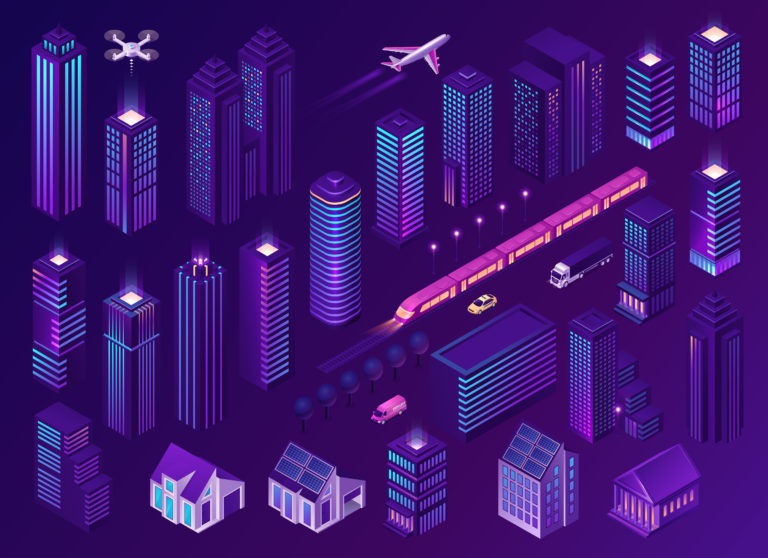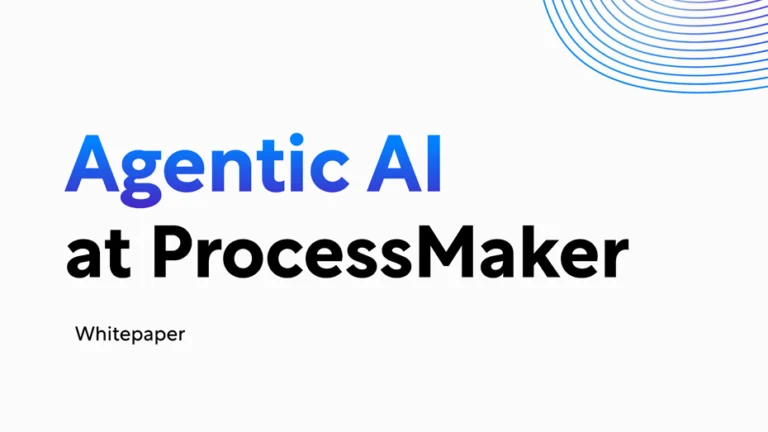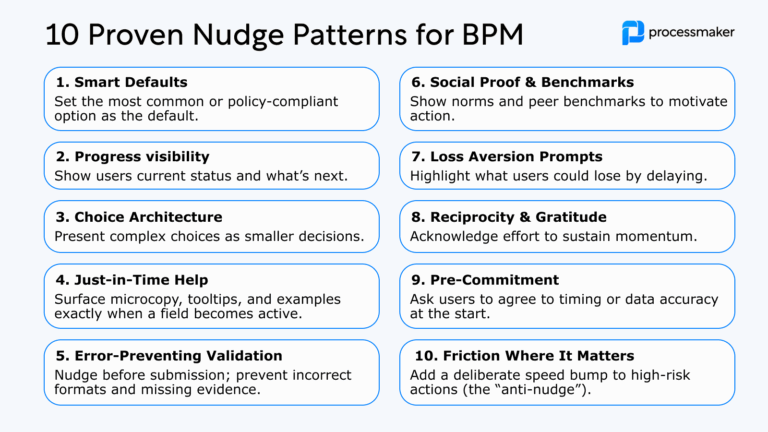As the IoT paradigm continues to expand, physical devices are integrated with actuators and sensors to connect the digital world. It makes sense to combine IoT with business process management (BPM), creating sensor-aware business processes.
In 2020, the number of IoT devices spanned 8.74 billion. Intelligent devices have transformed work and personal life. Advanced sensors also create new business models. Further, IoT devices can generate tremendous amounts of data. Processing this data requires automation. There aren’t enough hours in the day to process and analyze big data manually.
In addition, it’s crucial to ensure data privacy, cyber security, and scalability of your sensor-aware business processes. Still, IoT devices should integrate in a way that is relevant to how your organization works. According to the IDC, IoT data is expected to reach 79.4 zettabytes (ZB) by 2025.
If your business processes help your organization achieve its objectives, IoT functionality can bridge the physical with the digital to create sensor-aware business processes. Thus, your processes may need to integrate with multiple IoT devices depending on the purpose of the activities. You can then orchestrate your business processes to serve your organizational objectives.
Why are sensor-aware business processes essential?
In many cases, the world of BPM and IoT concepts is still largely disconnected. Yet, the digital age demands a frictionless integration of the physical business world with digital process steps and workflows. IoT is the connection, the bridge, if you will. Nonetheless, you still have to map BPM and IoT directly to create a standardized system for implementation. Only then can your business processes genuinely represent the data that comes with IoT uniformly and consistently.
Integrate your systems
Most ERP systems are designed to depict and execute business processes with human input. On the other hand, IoT brings hundreds of thousands of devices into a spider-like structure that can deploy various aspects of your business processes while reacting rapidly to new changes in your environment.
To manifest the potential of evolving the business life cycle is to integrate IoT into an existing BPM environment with automated and non-automated processes. When you look at ERP systems based on a Service Oriented Architecture (SOA), you might imagine a process aligning with a task-driven by a service. In contrast, IoT evokes a specific class of services called IoT services that utilize sensors and actuators from devices and the software foundation on IoT devices. All processes relevant to IoT data can become sensor-aware business processes.
To clarify, it’s critical to enhance your business processes with direct IoT integration to help induce widespread adoption similar in structure to an online web. Also, it’s critical to note that you can have a set of non-IoT and IoT processes executed simultaneously.
The primary goal is to create a defined interface between your business process design, implementation, and deployment. Your sensor-aware business processes need to have the agility to manage every potential IoT scenario.
What are the requirements?
There are three different categories of requirements for sensor-aware business processes:
- Notation aspects (based on the variety of BPM modeling languages)
- Process editor aspects
- IoT-specific aspects
As mentioned earlier, sensor-aware business processes must be responsive to rapidly-changing variables, environments, and requirements. Therefore, sensors and actuators in the IoT devices must be written in the same language as the BPM. As a rule, they should be represented graphically in the process model. Consider this list of IoT-specific process properties:
- Extensions should include a physical entity and an IoT device. It should also support entity-based modeling.
- Support for multiple IoT devices integrated into business processes.
- Support for IoT devices, service, and data interactions.
- Data storage should be accessible and located on multiple devices.
- Extensions should be scalable.
- Every individual process component should be abstractive, meaning individual data is just as vital as data derived and combined from multiple devices.
- Each component should have the ability to depict its availability.
- Support for expression of a tolerable error rate.
- Extensions should facilitate sensor-aware business processes.
- Extensions should be able to convey issues with process components that may impact the model.
- Extensions should be able to apply constraints in real-time.
If you can’t fulfill any of the requirements above, then it would be helpful to utilize another similar extension.
Benefits of IoT and BPM integration
Organizations can create more revenue streams and patterns by harnessing and embedding intelligence from IoT devices. Additionally, sensor-aware business processes improve cost savings and efficiency. You can also overcome silos and disparate systems with seamless sensor-aware process orchestration.
Let’s take a look at three sectors where sensor-aware business processes can transform various activities:
Logistics and freight transport: Retail and logistics have already widely adopted IoT-based RFID technology. One primary application is for supply chain monitoring in real-time. Knowing exactly where containers are in transport can ensure freight transport is always ready for the next container. IoT devices can also determine cost-and-time-saving routes with less traffic or more parking space, enhancing overall logistics.
Healthcare: IoT devices can improve the quality of remote care and telehealth for the elderly or in scenarios like the COVID-19 pandemic, where it is safer for many to social distance. Nonetheless, people still need access to patient-centered healthcare. Further, IoT devices can help the elderly retain their living preferences for a longer period by utilizing Assisted Living resources remotely. Some components might include heart rate and blood pressure sensors with a GPS to ensure an ambulance service would arrive when needed with the EMTs receiving real-time alerts of what type of help is needed along with the fastest routes to the patient’s home.
Hospitals can also use IoT devices to track and maintain adequate inventory.
Manufacturing: You can equip robots with sensors to send data to the digital world for BPM. The processes can then trigger the next activity such as initiating the robot for the next task or even keeping human employees safe from potential accidents.
As a result, business processes can embed IoT data where it makes the most sense. BPM also adds to IoT’s quality and predictability. On the other hand, IoT can drive the full potential of BPM by helping to discover new processes or processes that are only needed for specific tasks and environments.
Designing the model for your sensor-aware business processes
Let’s discuss integrating IoT-specific extensions within your workflow diagram and how to map them out. Within BPMN 2.0, a process is depicted as a container for one or more sets of lanes. Each lane may include Data Objects, Activities, or Events. You can learn more about BPMN 2.0 mapping and examples here.
At the activity level, BPMN 2.0 supports resource allocation. In addition, there are a specific number of resource roles per activity. If a class performer is a subclass of ResourceRole, then it also receives every model and attribute association. Moreover, it defines the resource executing the activity.
To map your sensor-aware business processes, it would be helpful to define a new resource role as a subclass IoTDevice. Since BPMN 2.0 does not inherently support two process resource definitions simultaneously, it would help to add a subclass to Lane named IoTDevice and to add device resource allocation at the lane level. Therefore, the subclass will receive all the necessary relationships and attributes of the class Lane and class BaseElement.
You can also support diverse parameters with the IoTParameterDef class. While the parameters’ schema is not stored with the BPMN 2.0 model, it can reference it using extParameterRef pointing to the schema description of an IoT device.
Additionally, the class Expression can retrieve the parameter value of IoTParameterDef. Particularly, the Expression utilized for the resource assignment of the native service and the IoT device is defined by the IoTAssignment. You can make this assignment when you are modeling your sensor-aware business processes.
Thus, even if a process resource is not previously known within the BPM environment, it can be defined as a potential performer in the class Lane (IoT device) and as a part of the (native service) activity. Now, you can deploy activity assignments to your external infrastructure component.
Key takeaways
The global IoT market is expected to surpass $1 trillion in 2030. Meanwhile, IoT devices now include alarm systems, appliances, thermostats, smartphones, production monitors, security systems, and more, providing big data that should be processed and tracked in a frictionless way. It’s not just about extracting or analyzing data. Capturing the essence of the data connects people to processes and automated systems. Linking data with human intuition can drive business process response.
By and large, sensor-aware business processes ensure effective communication between IoT devices. Including BPM enables an end-to-end solution with analytics, mobile, and social capabilities integrated into processes. Also, business processes add more depth and analytics to IoT data. ProcessMaker offers a BPMN 2.0 compliant intelligent business process management and low-code platform that makes it simple to model sensor-aware business processes.
- S. Meyer, K. Sperner, and C. Magerkurth, “Towards real world aware enterprise systems – Reflecting the quality information of physical resources in services and processes,” Proc. – 8th IEEE Int. Conf. Mob. Ad-hoc Sens. Syst. MASS 2011, pp. 843–848, 2011
- I. Graja, S. Kallel, N. Guermouche, and A. H. Kacem, “BPMN4CPS: A BPMN extension for modeling cyber-physical systems,” Proc. – 25th IEEE Int. Conf. Enabling Technol. Infrastruct. Collab. Enterp. WETICE 2016, pp. 152–157, 2016





